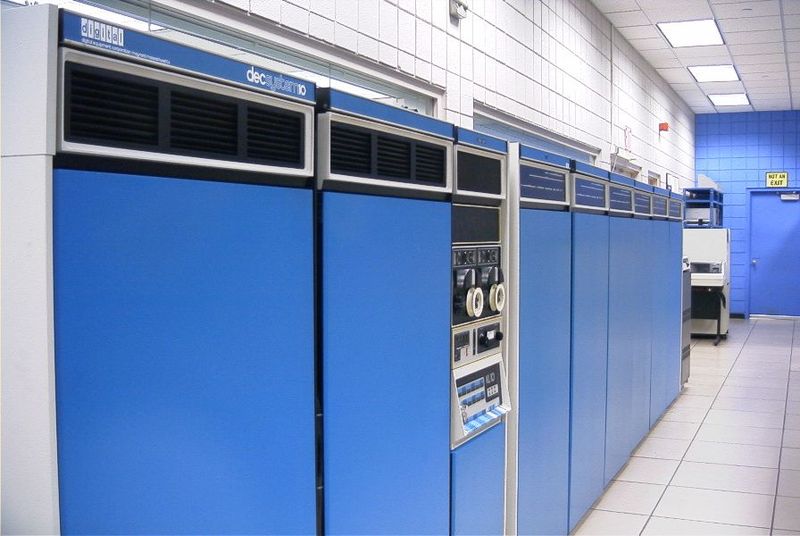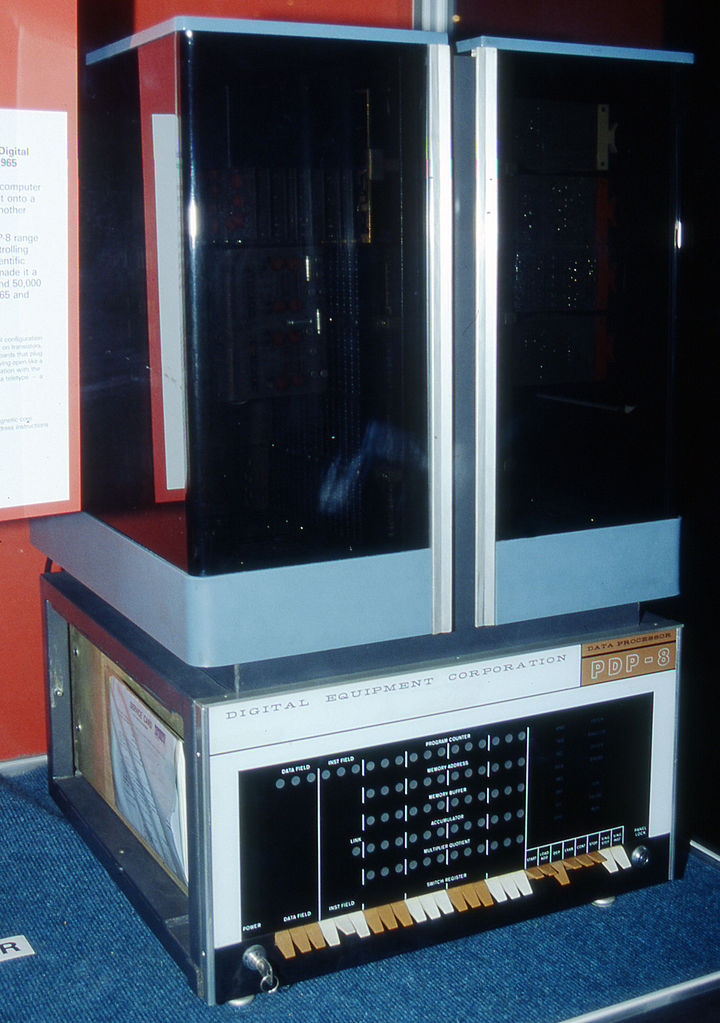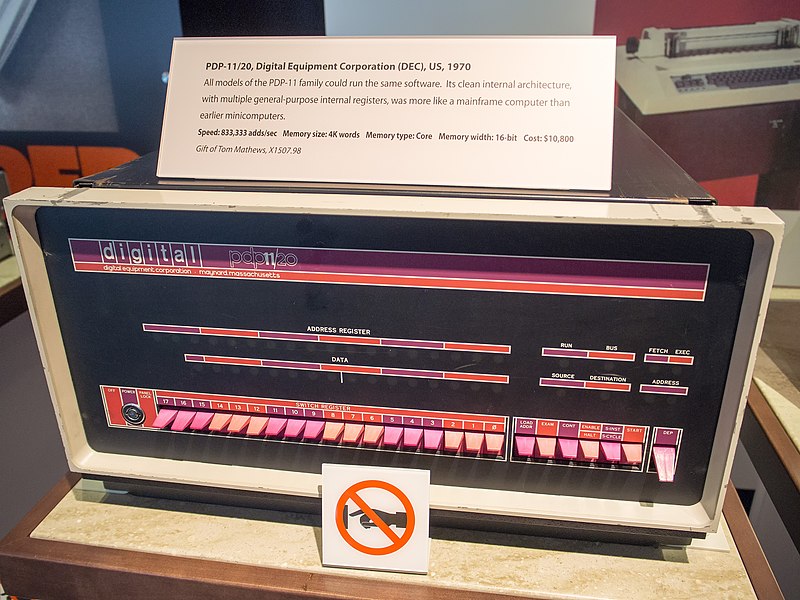
During the 1960s, corporations, research facilities, and educational institutions were finding more uses for electronic computer systems. Corporations were dealing with increasing amounts of business data, such as human resources and payroll processing, and account and sales data reporting. Research facilities required increasingly complex calculations and simulations. Educational institutions needed to train their students for all of the above.
An industry to supply these computers sprung up, when old tabulation equipment suppliers like International Business Machines (IBM) moved to electronic records management, and Digital Equipment Corporation (DEC) needed a way to control the lab equipment it sold to its customers. DEC produced a series of computers with the name "Programmable Data Processor".
The first few series were very primitive by modern standards, a collection of discrete components including transistors, diodes, and resistors, all assembled by hand. Over time, the machines became more sophisticated, and by the mid 1960s, DEC had sold a successful series of large computers known as PDP-10, which was built around a "36-bit" architecture: it had instructions that operated on 36 bit peieces of data at a time. These machines were very large, about the size of a few refrigerators. They were also very expensive, most DEC customers owned a single PDP-10 system. Time-sharing software was written for these machines, that would allow multiple users to access the machine at the same time, with the software presenting an illusion to the user that they alone were using the machine.
 PDP-10. Image courtesy of Michael L. Umbricht via Wikimedia
PDP-10. Image courtesy of Michael L. Umbricht via Wikimedia
On the other end of the size spectrum, DEC had also been selling a 12-bit system called the PDP-8. This was a much more limited, but much more affordable system, and was the highest-selling computer series of its time. The PDP-8 was also a very open system, and DEC included detailed specifications of the hardware, which allowed the PDP-8 to be integrated into other electronic equipment, for example, as the control system for industrial machinery. It was also used for general scientific and business purposes. However, as a 12-bit machine, the PDP-8 was limited to only four thousand 12-bit values in memory. There were a number of mass storage devices for the PDP-8, such as magnetic tape, but as size needs grew, working with a limited system become much more cumbersome.
 PDP-8. Image courtesty of Kirk1013 via Wikimedia
PDP-8. Image courtesty of Kirk1013 via Wikimedia
Late in the 1960s, DEC embarked on a project to build a new system that could address the growing needs of their customers, and provide a more affordable option to businesses and institutions who were starting to incorporate computers into their workflows. This project became known as the PDP-11.
The PDP-11 was intended to be a scalable, modular architecture, that could be used both in embedded environments, as well as a general-purpose business and simulation machine. In late 1969, DEC introduced the PDP-11/10, intended for the embedded process control market, and in the new year, the general purpose 11/20, which we will focus on in this series, starting $10,800 (around $73,500 in 2020). The /20 was a very basic machine- it shipped with a Teletype Model 33 ASR, and 8 kilobytes (organized as four kilowords- a word being a 16 bit value) of magnetic core memory.
 Excerpt from the December 15, 1969 PDP-11 price list. vintagecomputer.net
Excerpt from the December 15, 1969 PDP-11 price list. vintagecomputer.net
The PDP-11/20 processor, known as the KA11, was not a microprocessor- it was a series of boards that used early logic gates from the well known "7400" series. It did not include hardware instructions for multiplication and division, nor did it have any memory management capability. There was no read-only memory for bootstrapping the machine, so the PDP-11/20 included a panel of switches and lights that were used to load programs into the computer. Typically this was used to enter a small "bootstrap" program that would read a program punched on paper tape that would load the program that the user was interested in. Later models in the series addressed all of these issues.
 The PDP/20. Image courtesy of Ik T via Wikimedia
The PDP/20. Image courtesy of Ik T via Wikimedia
The PDP-11 series were a hit in the marketplace. Notably, many of these machines ended up in research instutions such as Bell Laboratories, and enducational institutions like the Massachusetts Institute of Technology. As a result, a large corpus of software was created, and notably, the UNIX operating system, which was written for the PDP-11 at Bell Labs.
The last PDP-11 was built in 1990, long after the introduction of DEC's 32-bit series of VAX computers, and not long before DEC's 64-bit series of Alpha computers. The first VAX system, the 11/780, had a built-in LSI-11 model of PDP-11 that served as its console subsystem.
The next post will give an overview of the PDP-11 architecture.